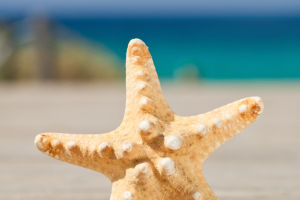Jellyfish play a vital role in the aquatic ecosystem, belonging to the class Cnidaria, which includes the cross jellyfish and cubic jellyfish.
These aquatic creatures are incredibly beautiful, with their transparent umbrella-shaped bodies varying in size, reaching up to 2 meters in diameter in some species. Their umbrella edges are adorned with beard-like tentacles, some of which can grow to be 20-30 meters long.
Jellyfish have a water-based body composed of inner and outer germ layers, with a thick rubbery layer between them that gives them a transparent and floating appearance. They move using water jet reflexes in their bodies, propelling them forward, appearing to be round umbrellas gliding through the water.
Some species of jellyfish also have patterns on their umbrella-shaped bodies, making them even more visually stunning. Their colors and patterns add to their beauty, making them an awe-inspiring sight in the blue oceans of the world.
Jellyfish can be found in all types of water, including tropical, temperate, shallow, and deep oceans, and even freshwater. They are one of the oldest creatures on Earth, with a history dating back over 650 million years, predating even the dinosaurs.
The world's waters are home to more than 250 species of jellyfish, all of which live in the ocean and are carnivorous, feeding on fish and plankton.
When hunting, jellyfish are passive and rely on their stinging cells to capture their prey, which they then deliver to their digestive cavities. They can use these stinging cells to shoot venom at their prey, quickly paralyzing and killing them.
Jellyfish are almost transparent, which makes them challenging for predators to spot. Some species of jellyfish can also glow, attracting prey with the faint light emitted by their bodies.
While jellyfish appear docile and harmless, they are, in fact, ferocious carnivores. The slender tentacles under their umbrella-shaped bodies are their digestive organs and weapons. These tentacles are covered with countless poisonous stinging cells, making them formidable predators in the ocean.
Jellyfish are one of the most beautiful creatures in the ocean, with their delicate bodies and elegant tentacles resembling "spirits" swimming through the water. These aquatic animals can be found everywhere in the ocean and in some freshwater lakes. Here are three strange and beautiful jellyfish species:
White-spotted jellyfish:
Also known as the Australian spotted jellyfish, this species is native to the Southwest Pacific waters. They are enormous and typically feed on snails, but in some areas, they are concerning due to their consumption of plankton that some fish need to survive.
Ctenophora frondosa:
This species of jellyfish is widespread in waters around the Mid-Atlantic Ridge, measuring about 5 cm tall. They emit a blue and green cold light, which is stunningly beautiful. However, they are vulnerable and were not discovered until 1978.
Antarctica deep-sea jellyfish:
These beautiful species inhabit the deep sea near Antarctica, with four orange muzzles and white tentacles. The tiny white spots on the umbrella are tiny amphipod parasites that feed on jellyfish.
Jellyfish are crucial components of the aquatic ecosystem, with their stunning appearance adding to the beauty of the ocean. They are some of the oldest creatures on Earth and are carnivorous, feeding on fish and plankton.
Despite their beautiful appearance, they are ferocious predators armed with venomous tentacles that make them formidable in the ocean.


